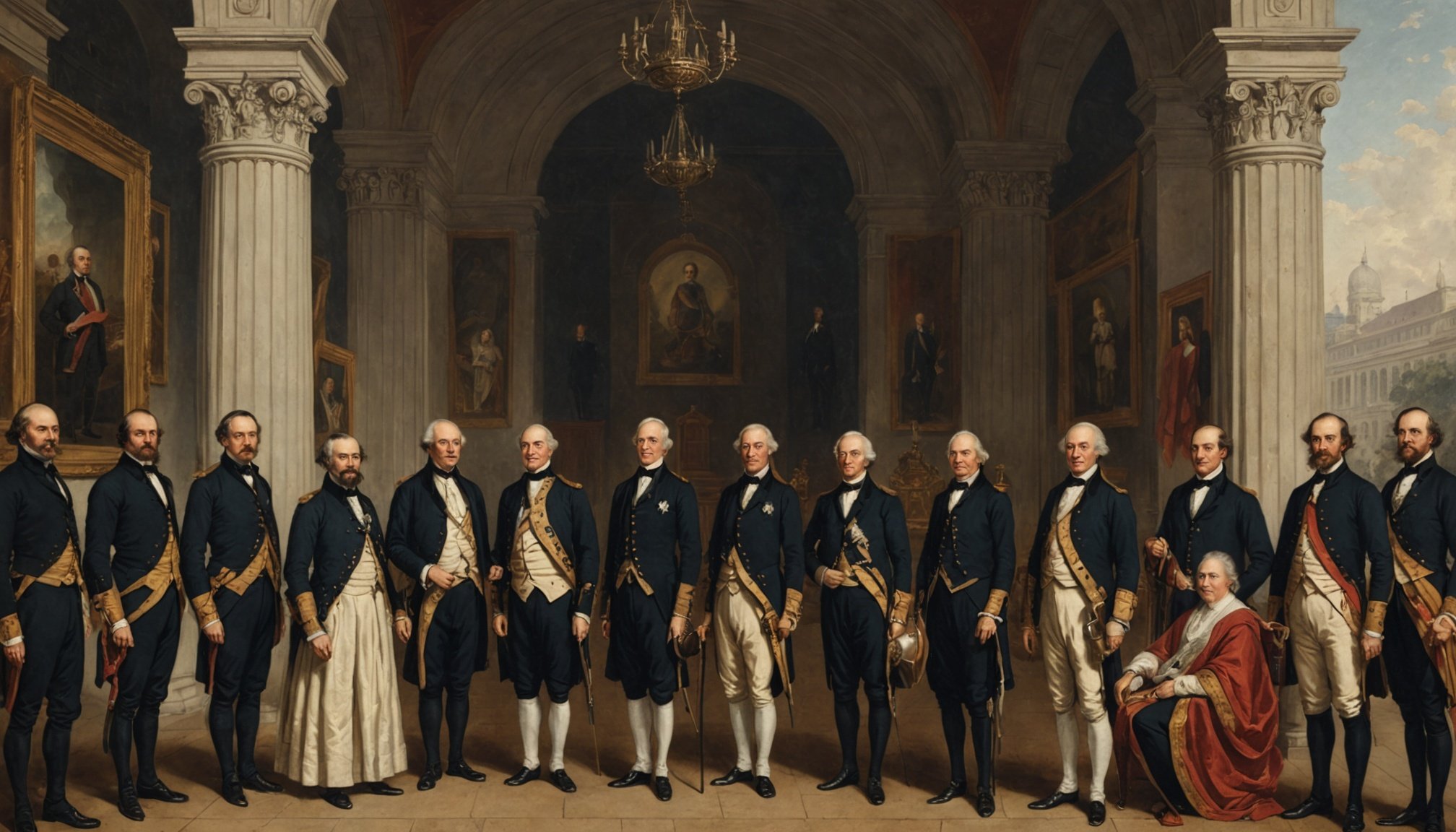Unveiling Genuine Guided Experiences: The Comprehensive Guide to Unraveling the Legacy of the British East India Company
The Establishment of the East India Company
The British East India Company (EIC), founded on December 31, 1600, was more than just a trading venture; it was a catalyst for a global empire that would shape the course of world history. The royal charter granted by Queen Elizabeth I to a group of 218 merchants and investors marked the beginning of an era that would see the EIC evolve from a humble trading company to a powerful governing entity.
Foundation and Charter
The EIC’s inception was driven by the ambition to challenge the dominance of the Portuguese and Dutch in the lucrative spice trade. The royal charter provided the Company with a 15-year monopoly on all trade east of the Cape of Good Hope and west of the Straits of Magellan. This charter was not just a commercial license but also a political mandate, granting the EIC extraordinary powers, including the right to establish settlements, make treaties, wage war, and maintain its own armed forces[1].
Also read : Explore authentic british gardening: participate in interactive workshops for a true hands-on experience
Early Ventures and Challenges
The EIC’s first voyage, led by James Lancaster in 1601, was a significant milestone. Lancaster’s fleet successfully reached the East Indies and returned to England with a profitable cargo of spices. However, the early years of the EIC were marked by fierce competition from the Portuguese and the Dutch East India Company (VOC), as well as internal challenges such as managing investor expectations and navigating fluctuating markets.
Securing Trade Privileges in India
In India, the Mughal Empire presented both opportunities and challenges. Captain William Hawkins’ arrival at the Mughal court in 1609 was initially met with resistance, but his successor, Sir Thomas Roe, successfully negotiated with Emperor Jahangir in 1612, securing trading privileges and the establishment of the Company’s first factory in Surat. This marked the beginning of the EIC’s foothold in India[1].
Also to read : Discover the UK Towns Where Traditional British Storytelling Comes Alive
Securing a Foothold in India
The EIC’s expansion in India was a gradual but strategic process. Here are some key milestones:
Expansion Through Trading Posts
- Madras (1639): The EIC established a trading post in Madras, which would later evolve into a major urban center under the leadership of Francis Day.
- Bombay (1668): The acquisition of Bombay from the Portuguese in 1661, as part of Catherine of Braganza’s dowry to King Charles II, was a turning point. By 1668, the British Crown had transferred control of Bombay to the EIC, transforming it into a thriving trading hub under Gerald Aungier.
- Calcutta (1690): Job Charnock spearheaded the growth of Calcutta, which became another crucial trading center for the EIC[1].
Indian Allies and Collaborators
The success of the EIC in India was heavily dependent on the support of local intermediaries and allies. Merchants, bankers, and local rulers often collaborated with the Company, either for mutual benefit or under duress. The Jagat Seth banking family in Bengal, for example, financed the Company’s ventures and provided logistical support. Indian soldiers (sepoys) also became a crucial component of the EIC’s private army[1].
The Transformation from Traders to Rulers
The EIC’s transition from a trading company to a governing entity was a result of several key events and policies.
The Battle of Buxar and the Treaty of Allahabad
In 1764, the Battle of Buxar solidified the EIC’s authority over Indian rulers. The Treaty of Allahabad in 1765 granted the EIC “Diwani rights,” allowing it to collect revenue in Bengal, Bihar, and Orissa. This marked a significant shift from being a trading enterprise to a governing authority[1][2].
The Role of Indian Officials
Many Indian officials and administrators worked within the EIC’s framework. Figures like Mir Jafar and Mir Qasim initially allied with the Company, though often at great cost to their own autonomy. Indian bureaucrats, zamindars (landowners), and soldiers became integral to the EIC’s operations, further entrenching its power[1].
Governance and Exploitation
The EIC’s governance in India was characterized by administrative reforms and revenue systems, but also by exploitation.
Administrative Reforms and Revenue Systems
With the acquisition of the Diwani of Bengal, Bihar, and Orissa, the EIC developed a more structured administrative system to manage its expanding territorial and financial interests. However, this system was often exploitative, leading to the destruction of Indian industries and a massive wealth drain from India to England[2][3].
The British Raj and the Decline of the East India Company
The British East India Company’s reign eventually came to an end due to internal and external pressures.
The Indian Mutiny of 1857
The widespread mutiny of sepoy troops in 1857 led to a reevaluation of the governance structure in India. The British government took possession of the Company’s assets and imposed direct rule, marking the beginning of the British Raj. The Government of India Act of 1858 transferred British power over India from the Company to the crown[3].
The Legacy of the British Raj
The British Raj had a profound impact on India, introducing modern infrastructure such as railroads but also perpetuating economic exploitation. By the start of World War I, the British had laid over 35,000 miles of rail track, linking India’s agricultural heartland to imperial port cities. However, this also accelerated the extraction of raw materials and the transition from subsistence to commercial agriculture[3].
Practical Insights and Actionable Advice for Exploring the Legacy
For those interested in exploring the legacy of the British East India Company, here are some practical insights and actionable advice:
Visiting Historical Sites
- Tour London: Visit the British Museum and the National Archives in London to see artifacts and documents related to the EIC.
- Tour India: Explore cities like Kolkata, Mumbai, and Chennai, which were once major trading posts of the EIC. Visit historical sites such as Fort William in Kolkata and the Bombay Fort in Mumbai.
- Hampton Court Palace: Although not directly related to the EIC, Hampton Court Palace offers a glimpse into the royal life of the period when the EIC was founded.
Reading and Learning
- Books: Read historical accounts like “The Honourable Company: A History of the English East India Company” by John Keay to gain a deeper understanding of the EIC’s history.
- YouTube Channels: Follow history-focused YouTube channels that offer detailed documentaries and analyses of the EIC’s legacy.
- Guided Tours: Join group tours that focus on the history of the British Empire and the EIC. These tours can provide a rich and immersive experience, especially in cities like Kolkata and Mumbai.
Key Figures and Their Roles
Here are some key figures who played crucial roles in the history of the EIC:
- Sir Thomas Smythe: The first governor of the EIC, who set its foundational policies.
- Sir Thomas Roe: The first official ambassador to the Mughal court, who secured trading privileges for the EIC.
- Robert Clive: A pivotal figure in the EIC’s military victories, including the Battle of Plassey, which marked the beginning of British territorial expansion in India.
- Warren Hastings: Served as the Governor of Bengal and played a significant role in the EIC’s administrative reforms and expansion[1][4].
Comparative Analysis: EIC vs. Other Colonial Powers
Here is a comparative table highlighting the key differences and similarities between the EIC and other colonial powers:
| Aspect | British East India Company | Dutch East India Company | Portuguese East India Company |
|---|---|---|---|
| Founding | 1600 | 1602 | 1489 |
| Primary Focus | Spices, textiles | Spices, textiles | Spices, gold |
| Territorial Control | India, Southeast Asia | Indonesia, Southeast Asia | India, Middle East, Latin America |
| Military Presence | Significant private army | Smaller private army | Naval supremacy |
| Legacy | Shaped British Raj | Contributed to Dutch colonial empire | Established Portuguese colonies |
| Economic Impact | Exploitative, wealth drain | Exploitative, focused on profit | Exploitative, focused on gold |
Quotes and Reflections
- “The East India Company was the first joint-stock company to be floated on the London Stock Exchange, and it was granted a royal charter by Queen Elizabeth I in 1600.” – John Keay, “The Honourable Company: A History of the English East India Company”
- “The Company’s transformation from a trading enterprise into a governing authority was a gradual process, marked by significant military victories and strategic alliances.” – William Dalrymple, “The Anarchy: The East India Company, Corporate Violence, and the Pillage of an Empire”
The legacy of the British East India Company is a complex and multifaceted one, marked by both profound achievements and deep-seated exploitation. Understanding this history is crucial for grasping the broader context of colonialism and its lasting impact on the world. Whether through visiting historical sites, reading detailed accounts, or joining guided tours, exploring the legacy of the EIC offers a rich and enlightening experience that sheds light on a significant chapter in world history.
Additional Resources
For those interested in delving deeper into the history of the EIC, here are some additional resources:
- Books:
- “The Honourable Company: A History of the English East India Company” by John Keay
- “The Anarchy: The East India Company, Corporate Violence, and the Pillage of an Empire” by William Dalrymple
- Documentaries:
- “The East India Company” by BBC History
- “The British East India Company” by History Channel
- YouTube Channels:
- Crash Course History
- History Time
By leveraging these resources and following the practical insights provided, you can embark on a comprehensive and engaging journey to unravel the legacy of the British East India Company.











